News & Blogs
In this blog, we touch on diverse topics about Japanese food cultures, practices together with the culinary secret, TREHA®, and its important role in the Japanese food industry. We hope our blog helps you obtain in-depth knowledge of Japanese cuisine and the science behind it, which is hard to find elsewhere.
Alluring, luxurious, and deadly. The name is blowfish.
Among many fish that taste the best in winter, blowfish is the king. The blowfish season starts in November and peaks in February. Because of the spawning season, umami is all over the blowfish from fillet to soft row, especially in February.
As many of you may know, blowfish are incredibly poisonous. The infamous blowfish toxin is tetrodotoxin, of which toxicity is 1000 times of another notorious poison, potassium cyanide. The highly toxic parts are mainly the internal organs, especially the liver and ovaries, where toxins accumulate. The eyes, skin, gill, and blood can also be toxic depending on the blowfish species. Here is the description from The Ministry of Health, Labor and Welfare of Japan. The symptoms from blowfish poisoning arise quickly, within 20 minutes to 3 hours after consumption. In severe cases, dyspnea may be induced, resulting in death. There are four clinical progressions in symptoms.
Stage 1: A patient feels numbness on the lips, tongue, and fingertips, causing difficulty walking. Headache or abdominal pain may be accompanied.
Stage 2: Shortly after vomiting, a patient loses the ability to move some parts of the body then becomes incapacitated. Sensory paralysis and speech disorders become prominent while experiencing difficulty breathing and low blood pressure.
Stage 3: Due to the relaxed skeletal muscles, a patient loses the ability to move all of the body and displays distinct speech disorder, allowing a vocal sound but no speech—difficulty in breathing and acute low blood pressure progress.
Stage 4: A patient loses consciousness and stops breathing. After respiratory arrest, the patient's heart stops beating, causing death.
According to the Ministry, there are about 30 incidents of blowfish poisoning annually, which hospitalize 50 people and kill a few people. Historically, the Japanese administration has long banned blowfish (from the end of the 16th century to the end of the 19th century) until Hirobumi Ito, the first Prime Minister of Japan who fell in love with the fish and directed the Governor of Yamaguchi Prefecture to lift the ban. Now blowfish is consumed all over the country.
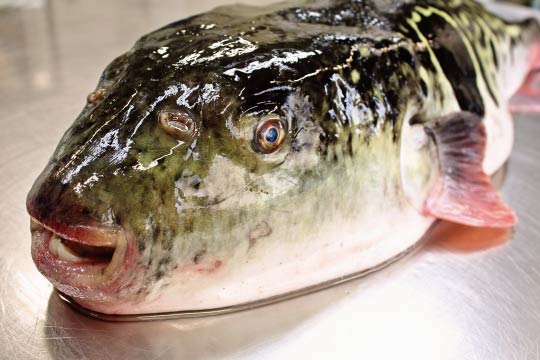
"Fugu chef" who safely processes blowfish, a highly poisonous fish.
Do the Japanese dare to risk their lives for such toxic fish? Rest assured! There are certified "fugu chefs" who clean and cook blowfish safely. Although the requirements vary by prefecture, there are two prerequisites to be a certified fugu chef: a candidate must be a licensed chef, a national qualification in Japan, and a candidate must have more than two years of work experience under a fugu chef. According to the Ministry of Health, Labor and Welfare, most blowfish poisoning arises when anglers and amateurs prepare the fish at home. Blowfish dishes are safe as long as a certified fugu chef adequately prepares them.
Now you know blowfish poisoning is the last thing you want to get. Each local government has a set of regulations to handle the toxic parts of the fish after cleaning. Only a qualified fugu chef can access the locked trash bin that keeps poisonous waste from the fish. The trash bin must be made of impermeable material such as metal or plastic, meaning wooden trash is illegal. In Tokyo, only a hazardous material control facility could handle the deadly waste by incineration. The ash is further neutralized with caustic soda and finally buried in the ground for disposal. There are a lot of safety measures and compliance behind the scene. We can safely enjoy this winter delicacy thanks to the fugu chefs who cook the fish with great care. Thank you, Fugu Chefs!
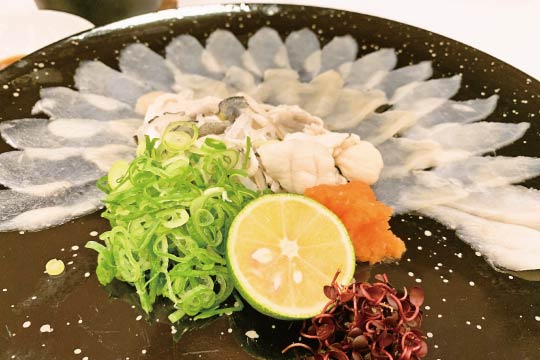
So, how does blowfish taste?
Blowfish are richer in protein and far lower in fat than ordinary white flesh fish. Not only low in calories, but the fish also contains plenty of collagen in the skin, making it ideal for maintaining beauty and health. Among 185 species within the blowfish family, 22 species allowed for consumption live in the waters near Japan. Tiger puffer, (torafugu トラフグ) is the best tasting and the most expensive fish, of which the retail price often exceeds 80 US dollars per pound, making it challenging to purchase casually. However, it is worth paying for the fascinating bouncy texture and incredible umami. A cheaper alternative is purple puffer (Mafugu マフグ), famous for its delicious meat and rich, soft roe. In general small-sized blowfish are budget-friendly and enjoyable at a fraction of other expensive kinds.
Let us introduce some typical blowfish dishes.
Sashimi (てっさ Tessa)
Blowfish sashimi, also known as Tessa, is a staple of blowfish dishes. This fibrous, uniquely crunchy sashimi features plenty of umami and a slightly sweet taste. It is commonly served in extra-thin slices.
Sashimi is the best choice to thoroughly enjoy the light taste and crunchy texture. It’s common to use a dipping sauce called Japanese citrus vinegar sauce (ポン酢 ponzu) or soy sauce with toppings such as green onions and grated daikon radish seasoned with chili pepper. The connoisseur's way is to scoop up several slices instead of picking them up individually. Each piece seems so precious to me that I cannot help picking one by one to prolong the blissful time to savor the rare dish as much as possible.
Kawasashi (皮刺し)
Kawasashi, meaning sashimi of skin, is boiled and shredded blowfish skin. With the taste of the gelatinous, collagen-rich, thick kawasashi covered in Japanese citrus vinegar, you could drink sake forever.
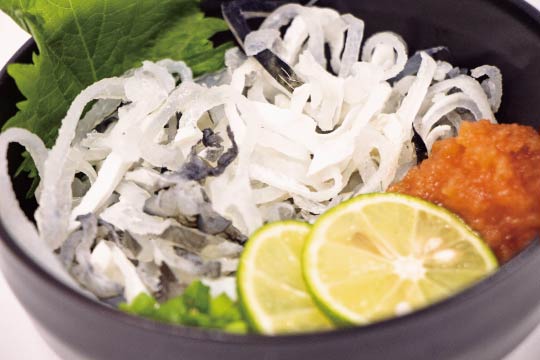
Fugu Nabe (てっちり tecchiri) & Fugu porridge
Fugu nabe, aka "Tecchiri" in the Kansai region, is a hot pot dish with blowfish fillets and bones, vegetables, and mushrooms stewed in a clay pot. Hot soup stock made with kelp gently wrapping all the flavors and complemented by herbs and Japanese citrus vinegar sauce, making it perfect for the cold season. After the fugu nabe, make sure to add some cooked rice to make "blowfish porridge" to consume the soup until the last drop.
Please click here to learn about the required final course of the hot pot called "shime 〆."
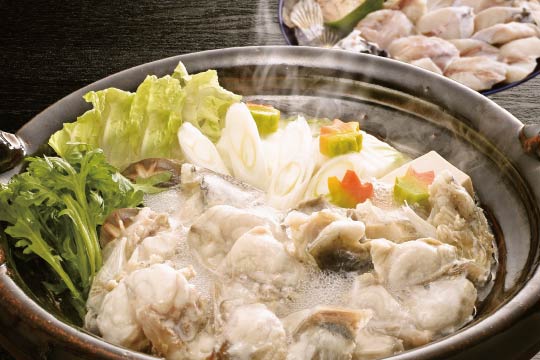
Yaki fugu (焼きフグ)
The dish refers to charcoal-grilled fillets and soft roe, which a restaurant would show off its original seasoning ranging from a simple salt sprinkle to bold-flavored house sauce. The aroma emanated from charcoal grilling is appetizing in either case. The soft roe, featuring a crunchy surface and smooth milky inside, is highly satisfying.
Karaage (唐揚げ)
Deep-fried peeled blowfish (karaage) is one of the best dishes paired with sake. The crunchy surface and fluffy inside are irresistible. Blowfish karaage is a casual finger food served with kabosu citrus, lemon juice, or salt.
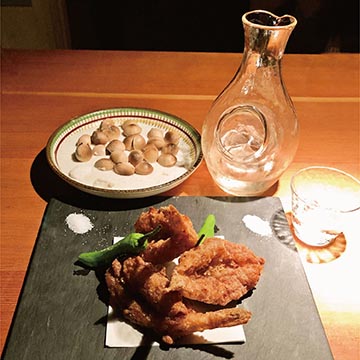
Fin sake (Hirezake ひれ酒)
Except for toxic parts, every bit of blowfish is full of umami, including fins (hire). The fins of torafugu (tiger puffer) caught in southern Hokkaido are best fitted with this drink. Sun-dried and roasted fins release the rich extract when soaked into hot sake (165 to 175 ℉), creating a unique and deep edge. Once the umami of blowfish permeates your whole body, it dangerously makes you keep drinking.
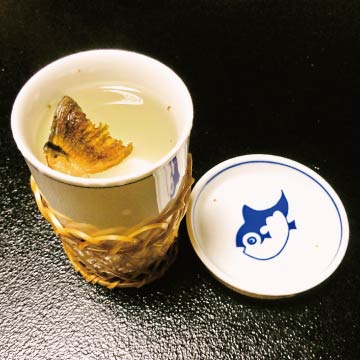
A saying goes, "blowfish is tempting, but life is hard to be thrown away," which is the West version of "honey is sweet, but the bee stings." The quote also refers to the fear of the sticky end after getting lost in indulgence. Yes, we all know irresistible urges could overpower logical thinking sometimes.
Blowfish in the wintertime is delicious and fascinating as such. Are you daring enough to try? If so, which dish would you choose? That is a precise moment to make you think, "I want to eat fugu, but I value my life"!
Did you find this blog interesting?
Please share it with your friends in the foodservice industry.
We regularly update the blog about the food culture of Japan, where TREHA® was discovered for culinary applications.
Click here and send us a message to subscribe.
Or hit us up on Instagram @trehalose_sensei!
You might also be interested in:
Japanese seasonal delicacies Part 4: Satsuma oranges (みかん mikan)
Japanese seasonal delicacies Part 6: Sansai (山菜) mountain vegetables

